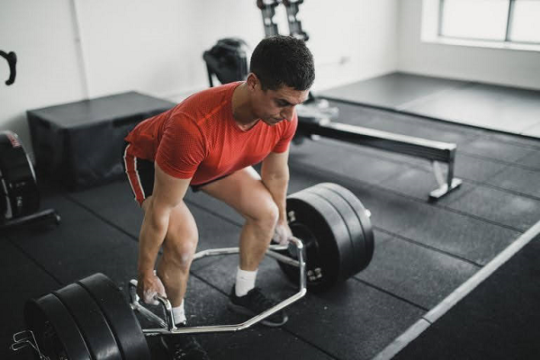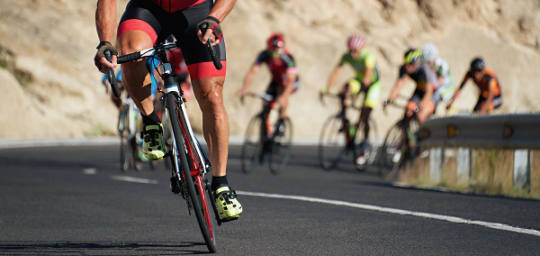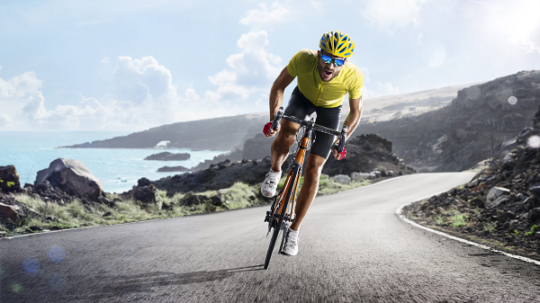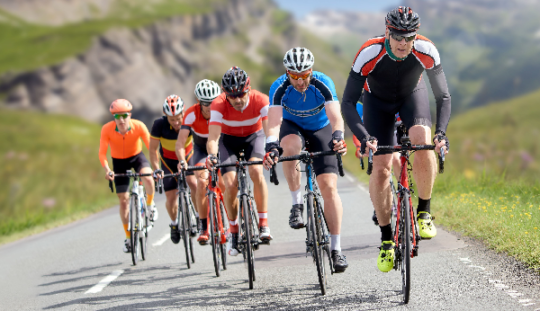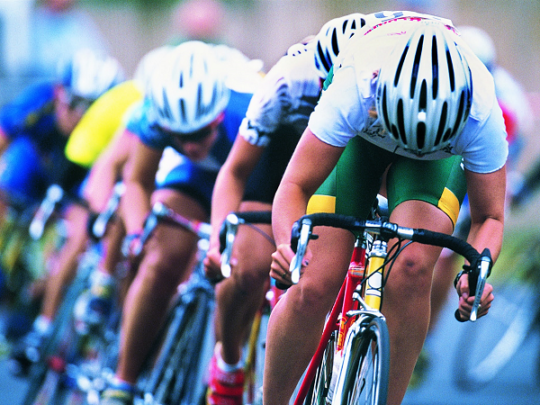RockTape is used to improve performance, prevent injury and to help with sprains or strains. RockTape increases muscle stability and can decrease muscle fatigue – both major contributors of injury. For patients with a sprain or strain where there is inflammation, we use RockTape to create a decompressive force to move the inflammatory material out of the joint.
What is RockTape?
Dr. Jan Kasprowicz: RockTape is also known as kinesiology tape. It’s a tape that has a lot of adhesive qualities to it and a lot of structure to it as well. It’s pretty much made out of 97% cotton, about 3% nylon, so it does have structure. The actual adhesive on the tape is hypoallergenic, doesn’t contain any latex. It could be applied to the skin, and it could also be removed from the skin easily with some hot water and some soap.
How does RockTape work?
Dr. Jan Kasprowicz: It matters what you’re actually using the RockTape for. In regards to pain, lots of our patients who come into the office have low back issues or they might have some knee pain. By applying the RockTape to the skin, it interferes with the pain signals, which is detected by the brain. It alters the actual pain mechanism, which the brain is inferring from the actual site.
What we actually use the tape for most frequently are for patients who come in with different kinds of sprains or strains where they’re having inflammation. We can actually apply the tape in a certain way where we can actually create a decompressive force, which will actually help move out a lot of that inflammatory material out of the actual joint. Sometimes, a patient comes in here, and they have a second or third degree sprain. I see a lot bruising, a lot of black, purple, yellows, and greens in the actual bruise. Wherever we put the RockTape over, within a day or two, where the tape has been over, it’s now back to its normal color, compared to the areas which aren’t covered with the tape actually it’s still black and blue.
We also can utilize the tape to turn certain muscles on and turn certain muscles off. We have a lot of runners and cyclists and triathletes who come into our office, complaining of knee pain and hip pain. They’re insidious. Insidious means that it just came out of nowhere. One of the things that we do is we check their different muscles to see which are activated and which are not. A lot of times, these athletes’ core are not activated, so the muscles are either working too much or not working enough. Applying some tape to their core will actually activate their core muscles, and miraculously, their knee and hip or their lower back pain disappears as well.
What are some conditions or symptoms that RockTape helps with?
Dr. Jan Kasprowicz: It’s great for reduction of pain. You could put the tape right over the area of pain and do like a crisscross pattern to really create a lot of decompressive force. You could also utilize it to reduce inflammation in certain areas. Even over lymph nodes. If there’s congestion in the lymph nodes, you could place tape over it as well. Also for any kind of stability issues. Lots of times, people will notice that they’re having decreased mobility because their brain is not able to achieve a sense of stability. If you tape a certain area, which is going to create lots of stability, the brain will perceive that stability and finally garner you that mobility that you need for your athletic event. Tape can also be used when you’re having other issues like plantar fascia issues. Plantar fascia, which is the fascia, the covering underneath your foot gets agitated, you could put the tape underneath the actual foot. It will help with that as well.
Can using RockTape help prevent injuries?
Dr. Jan Kasprowicz: Actually it does. The majority of reasons why people get injured, especially with athletic events, is due to the fact that they are either not conditioned enough or they can’t tolerate, go to a certain point because the lactic acid that they’re producing makes them fatigued. When they’re fatigued, their biomechanics, the way their joints are moving, is no longer stable. It’s no longer safe. Then you get an injury.
With RockTape, one of the cool things you could do with RockTape is you could tape certain areas. For example, let’s say somebody has been coming in with neck and shoulder issues. It doesn’t have to be an athlete. It could be anybody. Most likely, the muscles of their back called the rhomboids, they’re not keeping the shoulders back. The whole upper back, shoulder, and neck area is very unstable. Just by placing the piece of tape over the upper back with very minimal stretch on it, will actually give you this kinesthetic cue to keep your shoulders back. Like when you’re a kid and you’re slouching, your mom’s going to constantly tell you to keep your shoulders back. Keep your shoulders back. As soon as she stops telling you, your shoulders go forward.
The cool thing with the tape is the tape will keep your shoulder back, which will keep them in much better stable position. If you’re an athlete, if you can actually keep joints in a much more stable position, there’s a very less likelihood that you’re going to have an injury from a biomechanical issue. Don’t get me wrong. It’s not to prevent any kind of injury due to trauma from an injury or like a sprained ankle, but it’s a very good chance and a very good likelihood that it’s going to prevent injuries because you’re biomechanically more sound.
Will using RockTape help improve sports performance?
Dr. Jan Kasprowicz: Absolutely it does. We utilize RockTape … A good example is with our triathletes, our cyclists, and our CrossFitters. Even our powerlifters. A great example is a couple years ago, we had the New York Iron Man here in Manhattan. We had some actual Iron Man athletes come to the office on the Friday before the race. I believe it was on a Sunday. They heard that this office was like the rock people, and they wanted to get taped. If anybody’s familiar with this type of event, you’re going to be swimming, then you’re going to be cycling, then you’re going to be running. We would really tape these athletes from their foot, with one piece of tape, all the way from their foot over the back of their leg, up their hamstring, over their butt, over their lower back, all the way up to their neck. With the different pieces and parts of the tape, we put different amounts of tension because they’re doing three different events. This way, it would actually prevent fatigue. If you could prevent fatigue, it’s going to improve the sports performance.
Another great example is with CrossFit athletes. If they’re having to do a lot of pull-ups, we could use RockTape across their back, which will stabilize their upper back. We can also put RockTape on their hands, which will give them tremendously more grip strength.
Also with cyclists. A lot of times, when you’re cycling, after very long-distance cycling, sometimes upwards of 100 miles, you might get a little bit fatigued in your lower back or upper back. Applying tape to the area is going to give those muscles some support. This way, you don’t get fatigued. Like I mentioned before, if you could really reduce the amount of fatigue you have, you’re going to have increased sports performance.
If you are interested in speaking with Dr. Jan Kasprowitz, visit www.chiropracticandsportsrecovery.com, or call 917-748-2902 to schedule an appointment.
Click here to receive more information & to schedule your assessment

